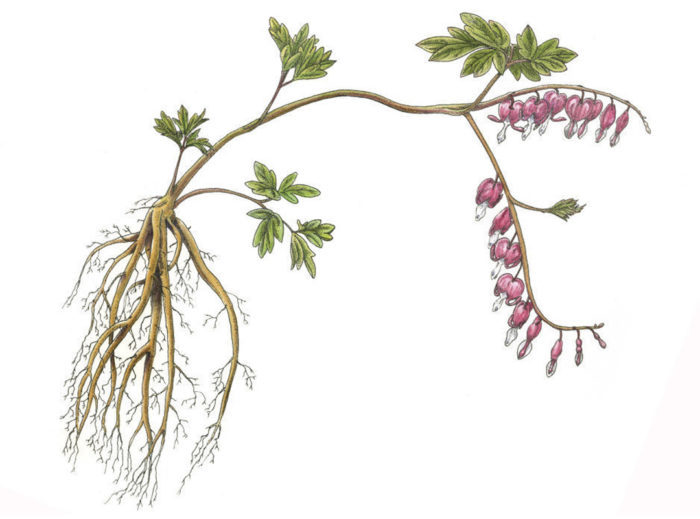
Roots are often overlooked by gardeners but deserve to get more attention. Of course, they are usually underground and out of sight, so it’s somewhat understandable why they are largely ignored. But roots play a critical role in the life of a plant. They anchor the plant to support the shoots above. They absorb water and mineral nutrients and conduct them upward. They store carbohydrates and other nutrients that are a source of energy for woodies, perennials, and biennials as they awaken and grow in spring. Knowing the structure, configuration, and function of your plants’ roots can help you understand how to optimize plant propagation, irrigation, fertilization, and placement in the garden. Learn about other types of roots systems including rhizomes, below.
Get familiar with the anatomy of a root
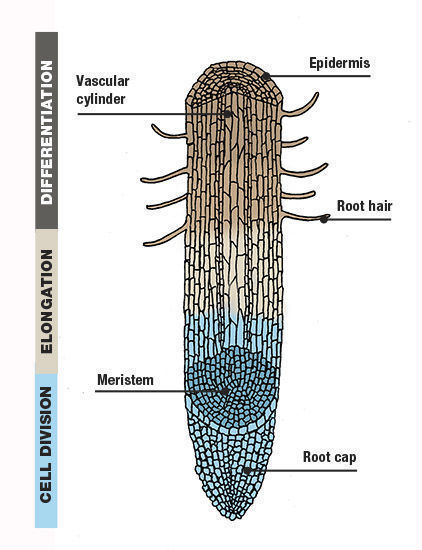
Understanding how roots form and grow is the key to understanding things like why a plant isn’t becoming more robust or why it may have tipped over in a windstorm. A root’s tip is where most of the action takes place, although it is structurally and functionally simplistic. The root tip has overlapping zones: where cells divide, elongate, or form different specialized cells. At the very tip, the root cap protects the rapidly dividing cells known as the meristematic region or meristem (zone of cell division). Behind the meristem, cells elongate and push the meristem and root cap forward into the soil so that the root can explore and mine new soil (zone of elongation). Farther back, only a fraction of an inch, is the portion where elongation stops and cells become more specialized and functional (zone of differentiation).
Root hairs form in the zone of differentiation; this is also where they begin to poke out into the soil to absorb water and mineral nutrients. Root hairs greatly increase the root surface area and therefore increase the ability of a plant to absorb water and nutrients. Vascular tissue is the next area of interest (vascular cylinder); it conducts water and nutrients upward through the core of the root. The epidermis is the final layer of cells and forms the skin of the roots. Water is absorbed through epidermal cells, too. In most woody plants, absorption is further increased by mycorrhizae, fungi that live in symbiotic association with roots. Lateral roots emerge from the core of the root, each complete with a root cap, meristem, root hairs, and all other basic root parts. The arrangement and spread of these clusters of roots determine the type of root system a plant has.
The type of root system dictates how you treat a plant
Plants may have two generalized root systems: fibrous and tap. A fibrous-root system consists of several to many main roots that branch frequently into a dense, shallow mass. Grasses as well as many annuals have fibrous-root systems. These root systems can help hold the soil together and prevent surface soil erosion. For instance, a single 20-inch-tall ryegrass plant may have an underground surface area of 1,890 square feet. With so many roots, fibrous systems are extremely efficient at absorbing water and mineral nutrients from the shallow portions of soil.
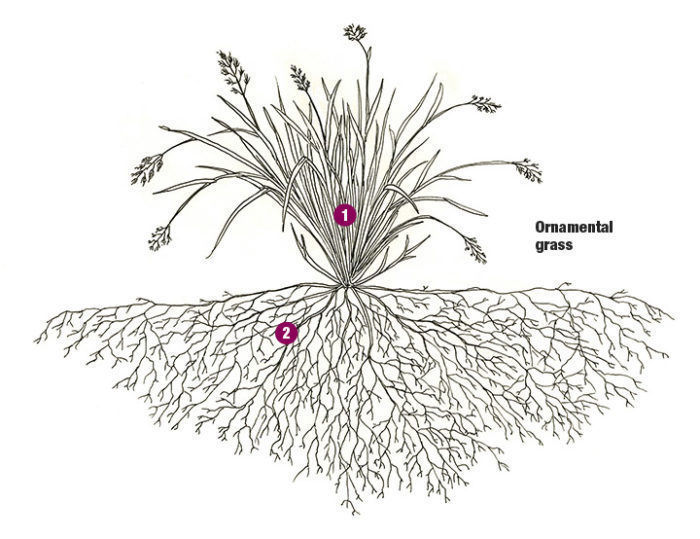
Fibrous-root system
- Type of plants: Most ornamental grasses and annuals, some perennials.
- What it looks like: Dense, matlike networks of roots that reside in the first few inches of soil.
How to care for it: Once established, more frequent watering but using less water; lighter fertilizer application; simple division.
Once a plant is established, the best way to nurture this shallow but efficient root system is by targeting the root zone with more frequent watering but generally using less water each time in comparison to a tap-rooted plant. This is because you don’t need the water to soak deeply into the soil, because there aren’t any roots there. The same holds true when feeding plants with fibrous systems; keep the fertilizer applications light because the nutrients will be absorbed only within the first few inches of soil. Division is easy with these plants and can generally be done by digging out a portion of the plant with a small section of the root system intact.
Tap-root systems, in contrast, have one main root from which smaller lateral roots branch (illustration below). Many common perennials, such as baptisia (Baptisia spp. and cvs., Zones 3–9), young trees including some pines (Pinus spp. and cvs., Zones 2–9), and even dandelions, have tap roots. Additionally, root vegetables such as carrots, beets, parsnips, and radishes have tap roots that store a significant reserve of food and nutrients. Young trees and shrubs have tap roots that explore and mine deeper portions of the soil where water is more likely found, which can help these plants persevere through drought conditions better than plants with fibrous systems. A deep tap root can also help quickly anchor a plant. They therefore can stabilize a deep section of soil and prevent erosion in windy areas or sandy soil.
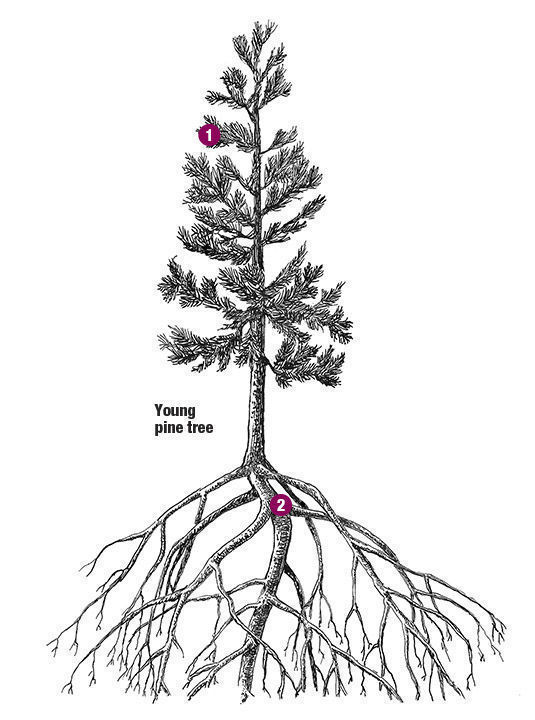
Tap-root system
- Type of plants: Many nonwoody perennials, seedlings, or young woody plants.
- What it looks like: One main root with smaller lateral branching roots. Deeper rooted than fibrous roots.
How to care for it: Once established, use more water, but less frequently; heavier fertilizer application; do not divide.
Plants with tap roots, however, can be difficult to transplant, especially when they’re bareroot or balled-and-burlaped because these plants do not bind soil well, leaving the roots more exposed and prone to damage. Growers sometimes undercut (trim the main tap root down while still growing in the propagation field) to stimulate lateral root branching well before they are dug out of the ground to sell. When compared to fibrous systems, an established tap-root system should get less frequent watering (targeted at the root zone) but with more water at each irrigation, along with heavier fertilizer applications, when needed. This is so the water and nutrients can reach all the way down to the fast-absorbing root hairs. With little exception, plants with tap-root systems shouldn’t be divided, because you can’t split the main root. Instead, propagate them by cutting or seed.
Placement may depend on how the system matures
Most nonwoody plants have one generalized root system (fibrous or tap) throughout the entire life of the plant. Woody plants, however, might start with a tap-root system but become more complex as they grow and develop. For example, the tap root of a young oak tree (Quercus spp. and cvs., Zones 2–9) is usually well formed and especially important for getting established. In most mature oaks as well as other mature trees, however, the tap root is eventually outgrown by other major downward and horizontal roots. For all root forms, the root configuration and depth change depending on soil characteristics and watering, too. For instance, the fibrous root systems of a perennial will stay shallow in soils that do not have good drainage or if watering is always applied too shallowly and frequently. With all root forms, the goal in watering is to move moisture just beyond the root zone, both laterally and deeply. This ensures that all the root hairs get a drink.
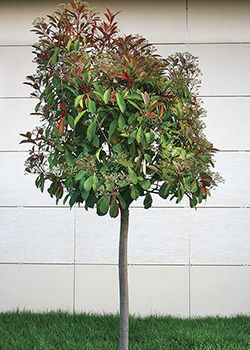
In a typical garden, you’ll likely mix plants with different root-system types. You’re probably thinking more about how this plays out aboveground (with the creation of compelling color or texture combinations), but it also has implications belowground. Interplanting shallow fibrous and deeply tap-rooted plants can help fully use (think layering of plants) or stabilize the soil. On the other hand, be aware that sometimes mixing root systems can be a bad thing. Turfgrass or masses of annuals, for example, growing right around newly planted trees and shrubs can rob the soil of water and nutrients before they can move to the young trees’ deeper tap-root system. It’s generally a good idea to keep dense, fibrous-rooted plants away from young trees in particular. Keep a distance of 12 inches away from their trunks.
The next time you have a chance to examine the root system of a seedling, potted plant, or freshly dug plant, take some time to examine and ponder how important and amazing the roots are.
Don’t be fooled by other types of “roots”
There are a couple of other types of so-called root systems that don’t fit into the fibrous or tap-root categories.
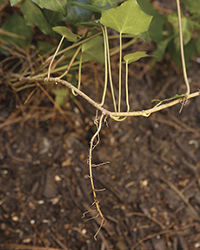
Adventitious roots arise from stems or leaves, not other roots. One example of these can be seen on ivy (Hedera helix* and cvs., Zones 4–9). As the plant creeps along the soil surface, roots can arise from stems and penetrate the soil, extending their coverage. Cuttings can be propagated easily by rooting these stem pieces. Corn plants develop adventitious roots as well. They appear at the base of the plant for the purpose of keeping it upright.
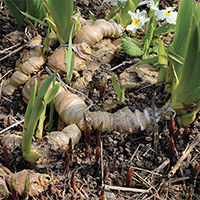
Rhizomes are root look-alikes that are actually stems. These specialized stems grow horizontally at or just below the soil surface. Many grasses, some ferns, and perennials such as bearded iris (Iris spp. and cvs., Zones 3–10, pictured) have rhizomes. To propagate these plants, the rhizome is cut or broken into sections, and at least one lateral bud “eye” or shoot is included on each cutting.
Why you should pay special care to the root hairs
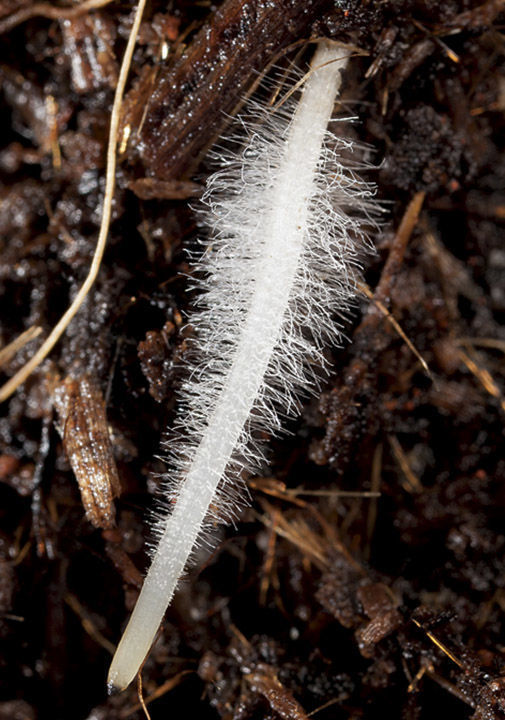
It is important to keep root hairs healthy. The overall vigor of a plant can often be judged by looking at the condition of the root hairs. When you buy a plant at the nursery, remove the pot if possible and look for healthy, usually white, root tips and hairs. Chlorosis, which is caused by an iron deficiency, is often incorrectly blamed on high pH or low iron in the soil. But the root hairs might be to blame. Iron is tightly held by soil, so in order for young leaves to obtain sufficient iron, there needs to be sufficient absorption by the roots and root hairs. If roots are not actively growing and reforming, as when soil is cold in spring, iron might not be sufficiently mined and conducted to new leaves.
Steven Tjosvold is an environmental horticulture adviser for the University of California Cooperative Extension.
Photos: Danielle Sherry; Jamain; Nemar74; Steven Tjosvold. Illustrations: Judy Simon
Fine Gardening Recommended Products
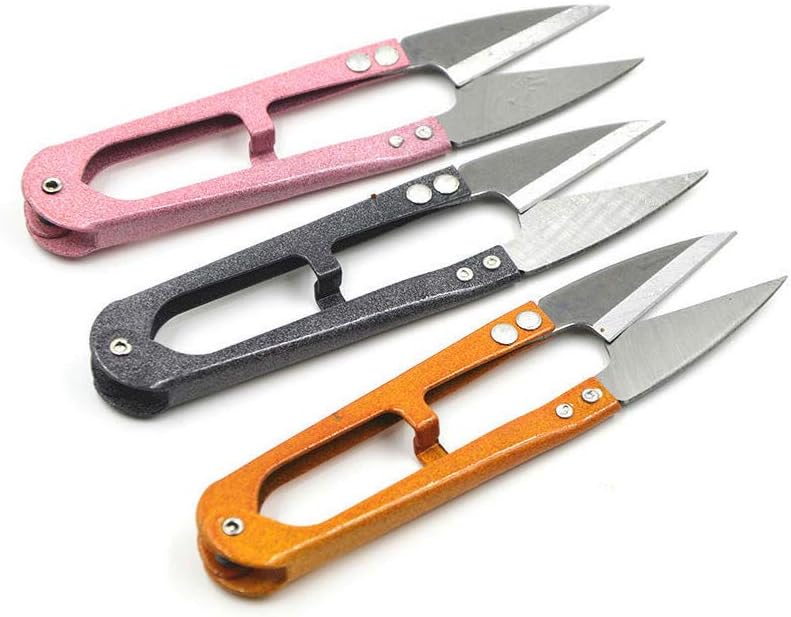
3 Pack 4.1Inch Bonsai Pruning Scissors
Fine Gardening receives a commission for items purchased through links on this site, including Amazon Associates and other affiliate advertising programs.

SHOWA Atlas 370B Nitrile Palm Coating Gloves, Black, Medium (Pack of 12 Pairs)
Fine Gardening receives a commission for items purchased through links on this site, including Amazon Associates and other affiliate advertising programs.

Pruning Simplified: A Step-by-Step Guide to 50 Popular Trees and Shrubs
Fine Gardening receives a commission for items purchased through links on this site, including Amazon Associates and other affiliate advertising programs.


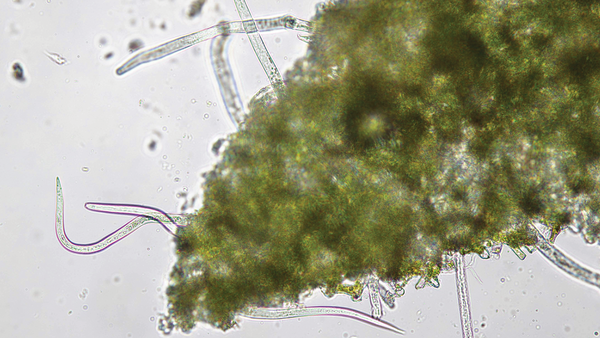















Comments
Log in or create an account to post a comment.
Sign up Log in